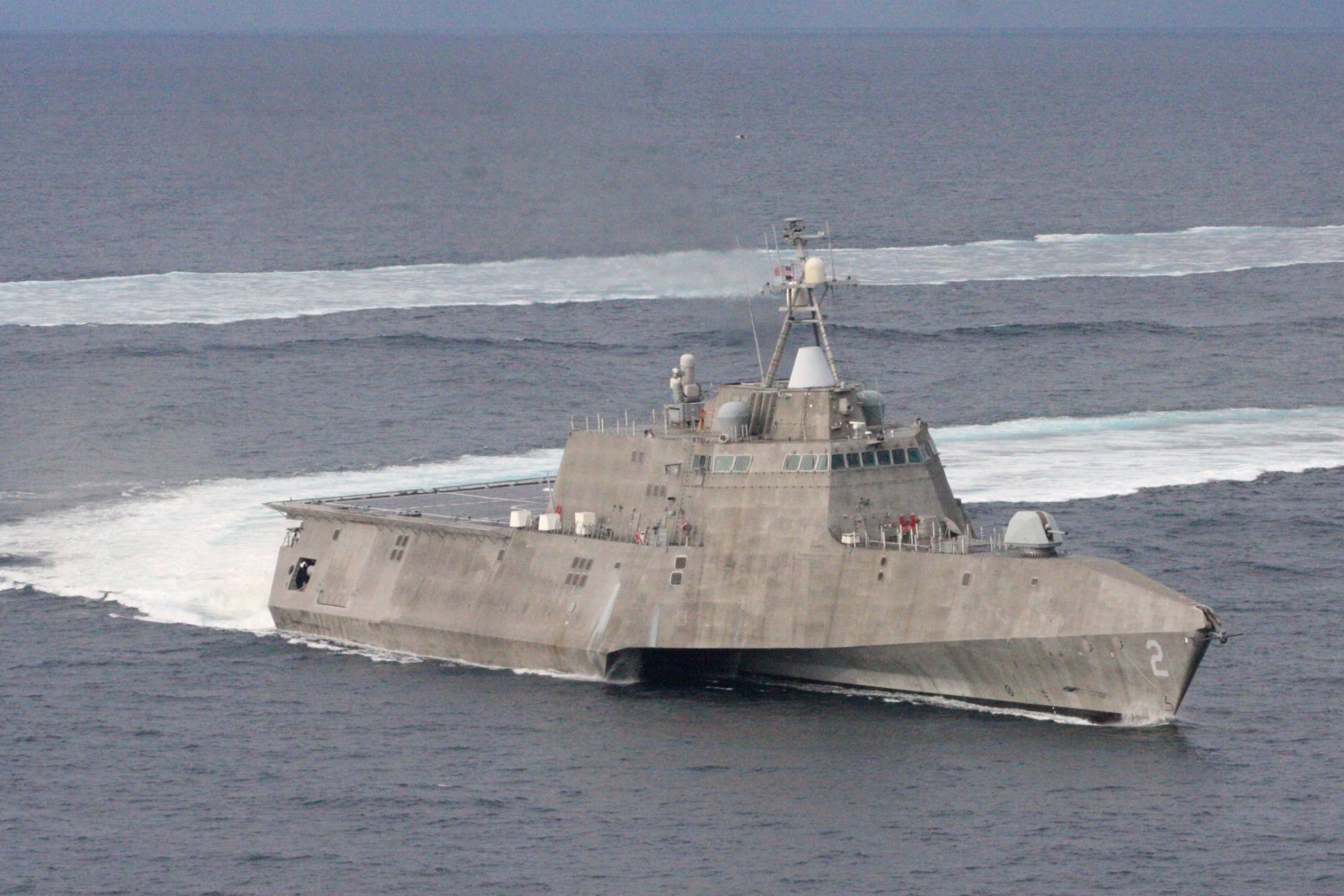_is_launched_from_the_Aegis_cruiser_USS_Lake_Erie_(CG_70)_as_part_of_the_Missile_Defense_Agency's_latest_Ballistic_Missile_Defense_System_(BMDS)_.jpg) |
| Image source: Wikimedia commons |
Showing posts with label defence capability. Show all posts
Showing posts with label defence capability. Show all posts
December 19, 2013
Ballistic missile defence and Australia
November 18, 2013
Littoral combat ships - lessons learnt from the US
Less than a fortnight after the 2013 federal election, the new Defence Minister David Johnston indicated that the protection of Australia’s exports through maritime security would be a major Defence priority. In order to achieve this, the Minister claimed that ‘our navy needs a suitable mix of high-end war-fighting capabilities’ and accordingly, consideration should be given to acquiring littoral combat ships (LCS). This article summarises the US experience of acquiring LCS and outlines some key benefits and challenges the US has faced.
 |
Image source: Wikimedia commons
|
October 3, 2013
Getting the balance right: U.S. perspectives on Defence reform
Image source: Wikimedia Commons
|
June 28, 2013
Streamlining Defence Acquisitions: the UK experiment
Image source: Wikimedia commons
|
June 25, 2011
New naval aviation combat helicopters
The announcement on 16 June 2011 by the Minister for Defence Stephen Smith and the Minister for Defence Materiel Jason Clare, that Australia would acquire twenty four MH-60R Seahawk ‘Romeo’ naval combat helicopters at a cost of over $3 billion brings to a close a period of uncertainty in Australian naval aviation.
Subscribe to:
Posts (Atom)


